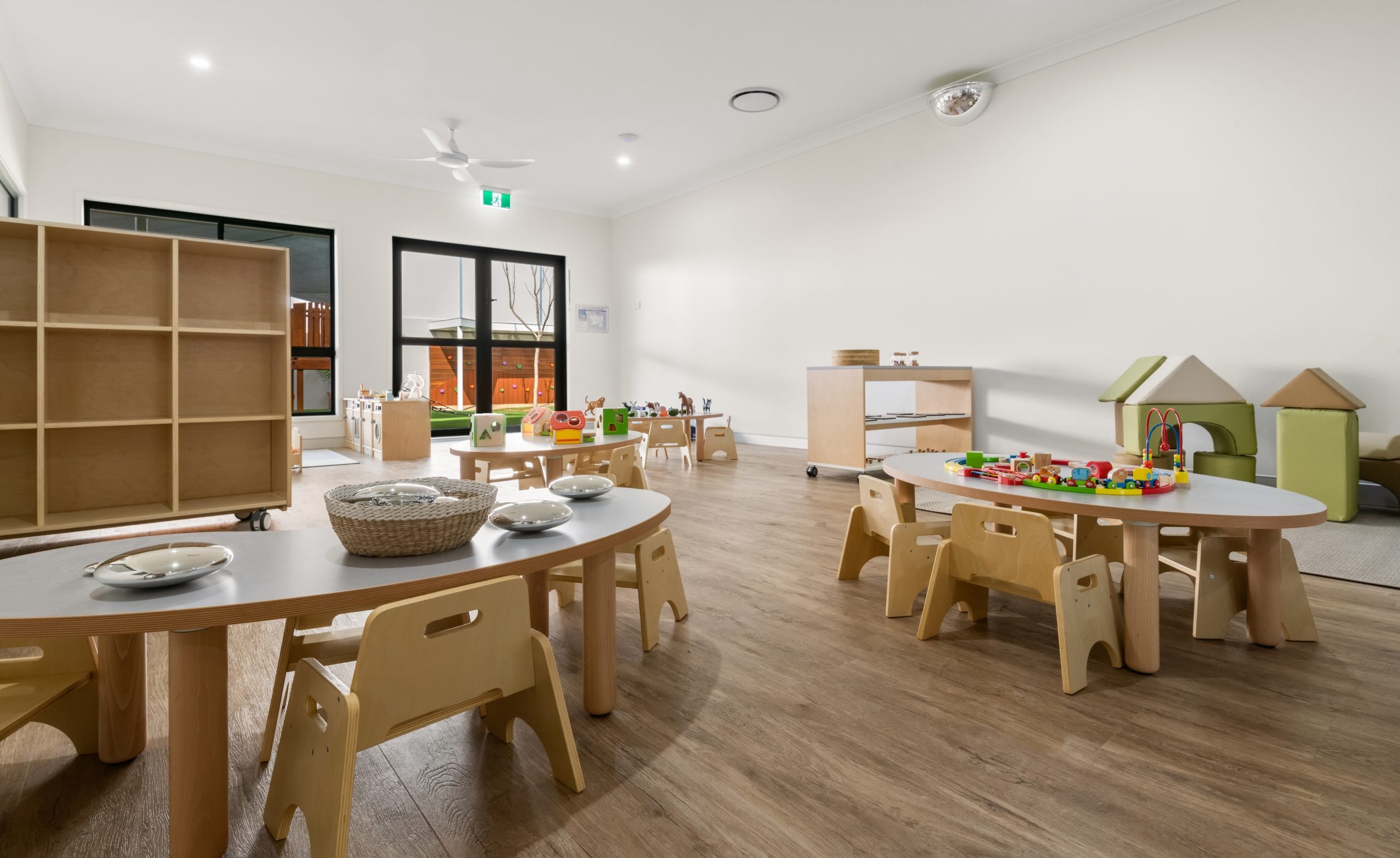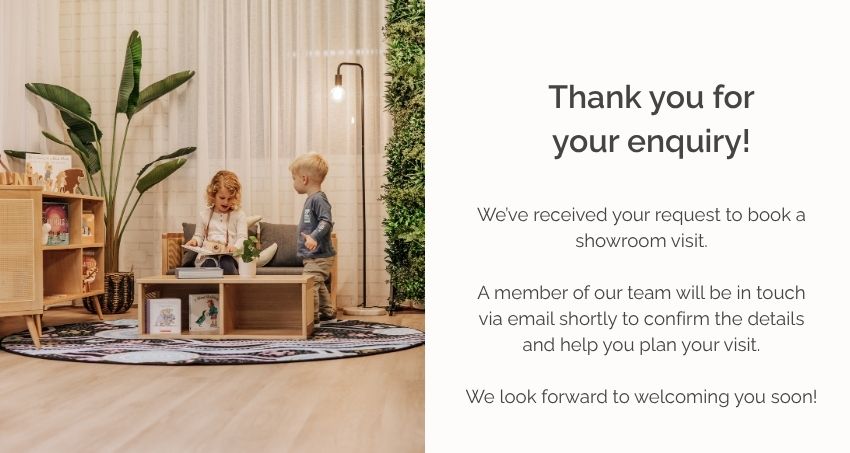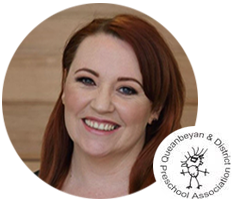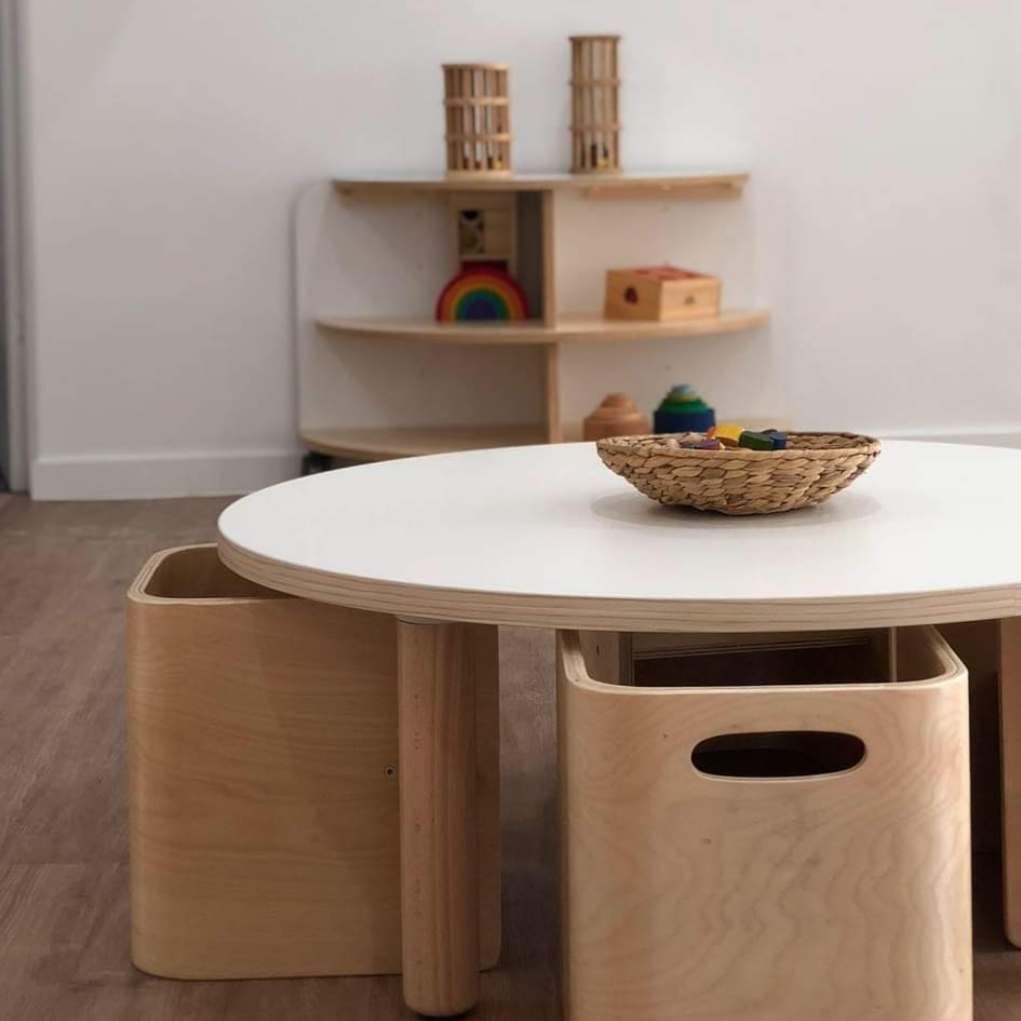
3 Emerging trends in Early Learning Environments
Centre Directors & Educators will see many trends in the Early Learning sector come and go, whether based around environments, teaching styles or learning approaches.
Let’s look at some current trends in the field currently particularly surround the learning environment.
-
A move towards Hamptons style/Scandi look
With the introduction and desire for a more natural feel to environments we have seen a lean towards Hampton/scandi interiors within services. These types of designs often lead to the more neutral colour palettes within the environments with the use of more minimalistic colours such as whites, creams and grey tones and less of the, some times over stimulating colour palette around the service that we used to look for. It is also more of a “home like” feel as encouraged through the EYLF.
Comfortable places to sit and engage with each other that include cushions and upholstered furniture give the environment that traditional Hampton design. Timber flooring and natural bright lighting is incredibly sought in the care environments today and in line with these designs.
-
Wooden toys & resources
The push for more natural resources and a desire to be more sustainable in our environments have seen a greater trend toward services providing equipment which is more likely to include items such as wooden toys and furniture. These are often more durable and match the environmental themes we are seeing more frequently. Wooden resources are easy to maintain and have less environmental impact than those of yesterday, which often included bright plastic-based resources. Resources made from natural resources also provide greater opportunity for the children to adjust the items to suit their play.
-
Increase in play-based learning
Looking back to the early 2000’s its easy to see the massive shift to the structure of the learning environment. A child’s day was often extremely structured with a strict daily routine of learning where educators often dictated what the children did and when. Today there is more of a lean toward child directed learning which offers children the ability to learn while they play.
More research and knowledge have allowed educators to understand just how valuable play is for children and our environments and routines open up more opportunity for the individual child to make choice and direct their own learning. We now understand that, while still oh so important to scaffold, observe and extend on the children’s play, that they are able to better learn about their environment, the world around them, and become confident and involved learners at their own pace when allowed to simply engage in the play space.











